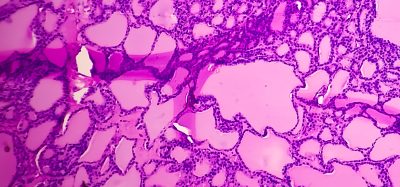Novel screening method identifies lead molecule for GPCR dimerisation
Posted: 30 November 2021 | Anna Begley (Drug Target Review) | No comments yet
The new high-throughput screening method identified nine lead molecules for rhodopsin dimerisation that may lead to next-generation medicines.


In new study led by University of California Irvine (UCI), US, researchers have developed a high-throughput screen methodology to identify compounds that affect a key G protein coupled receptor (GPCR) called rhodopsin (Rh).
NEWS: Single molecule from plant used by Native Americans may treat diarrhoea
Recent studies have shown that many GPCRs exist as dimers and oligomers, and that their organisation is an essential requirement for proper operation. The functional role of the dimerisation of Rh is currently unknown due to a lack of precise structural information.
This study, published in the Journal of Biological Chemistry, involved a monitoring tool for future investigation of the Rh signalling cascade. The tool also reveals the discovery of new allosteric modulators of Rh dimerisation that can alter the physiology of rod photoreceptors in the eye. The team screened 50,000 small molecules and used a novel assay for the detection of rhodopsin dimerisation. They identified nine lead compounds that demonstrated allosteric modulation of rod light response kinetics or reduction of rod sensitivity in vitro.
Our employed methodology will open new avenues for study, tremendously benefitting the discipline of pharmacology by improving understanding of the role of GPCR dimerisation”
In a subsequent cell-free binding study, the team found that all nine compounds decreased intrinsic fluorescence without affecting the overall UV-visible spectrum of rhodopsin, supporting their actions as allosteric modulators. According to the researchers, the next step will be to use medicinal chemistry to improve the pharmacological properties of the lead compounds.
“Our employed methodology will open new avenues for study, tremendously benefitting the discipline of pharmacology by improving understanding of the role of GPCR dimerisation,” commented corresponding author Professor Krzysztof Palczewski. “This approach will also be tested in other GPCR systems such as opioid, adrenergic receptors and others, paving the way to discovery of other more selective modulations of GPCR signalling. These advanced insights result in the identification and production of next-generation medications.”
The researchers added that understanding the functional role of GPCRs and identifying compounds that either enhance or disrupt the dimerisation of Rh could provide the key to unlock the full potential of these most effective therapeutic targets.
Related topics
Drug Leads, GPCRs, High-Throughput Screening (HTS), Hit-to-Lead, In Vitro, Small Molecules, Targets
Related organisations
University of California Irvine (UCI)








